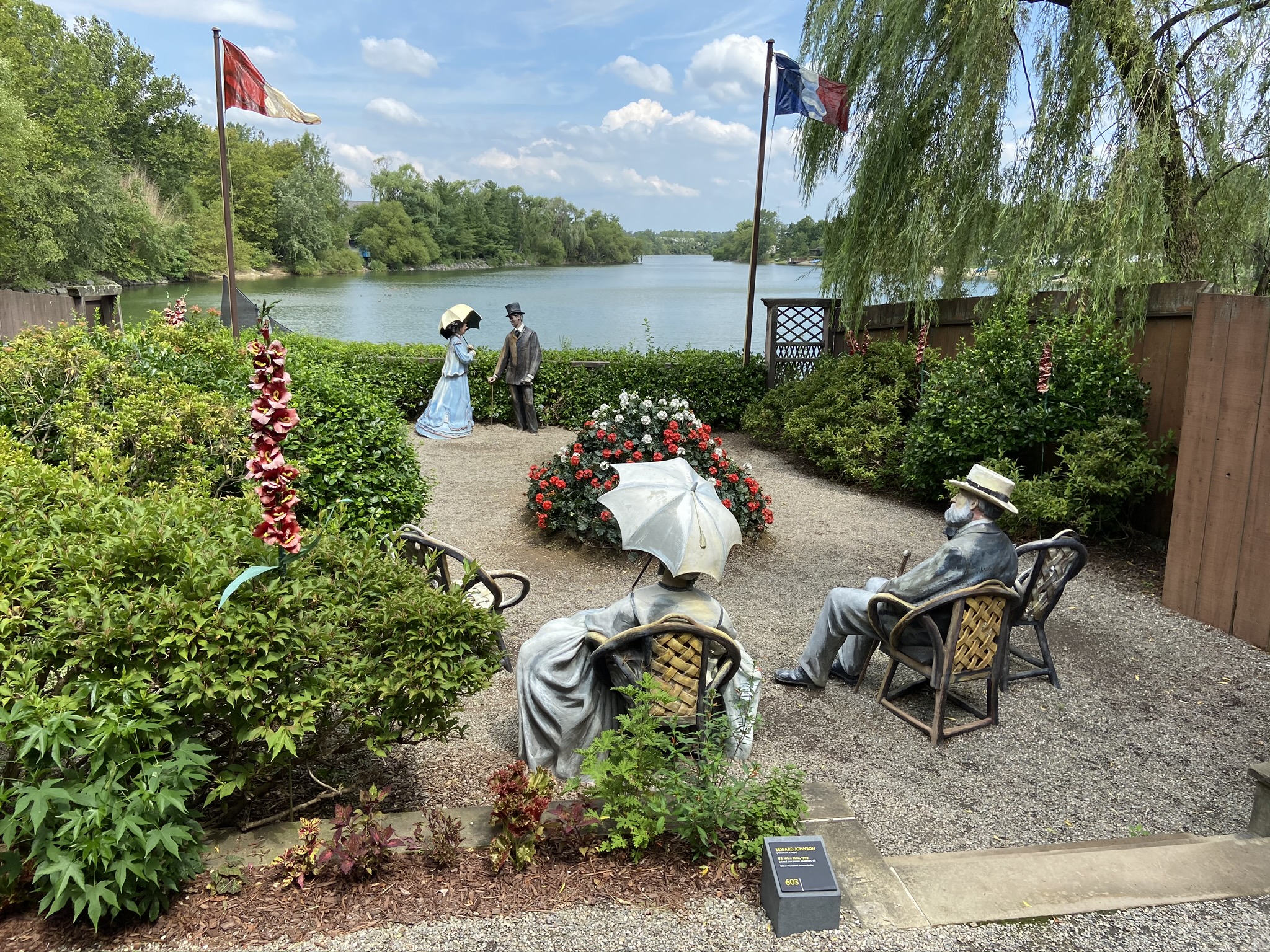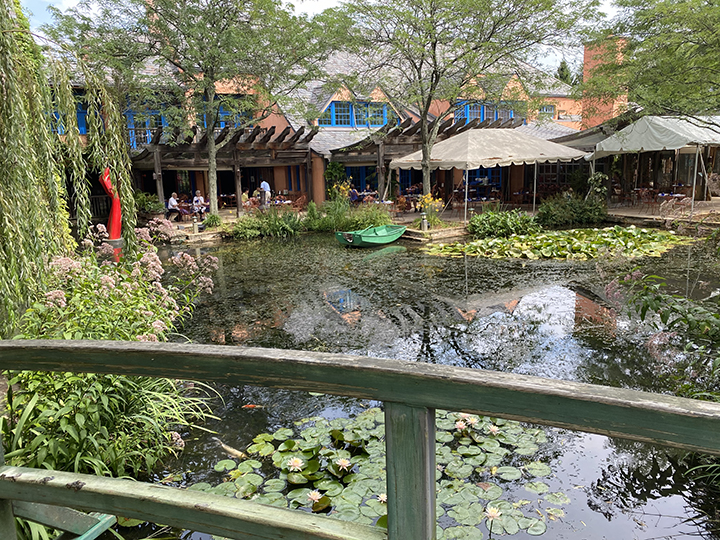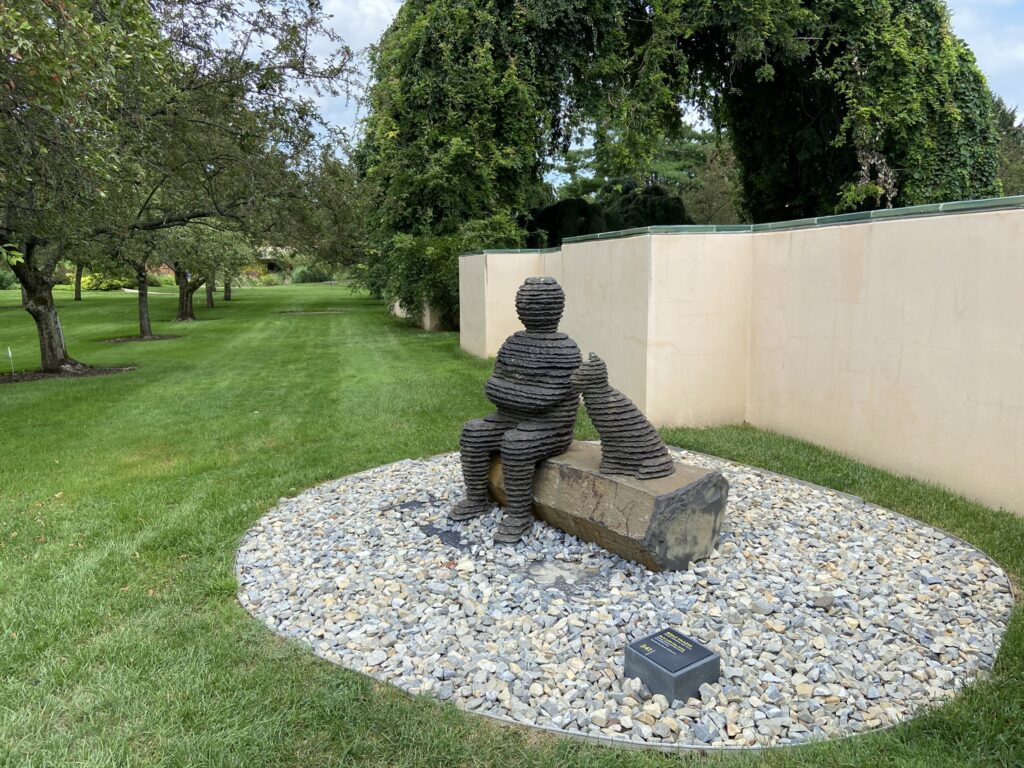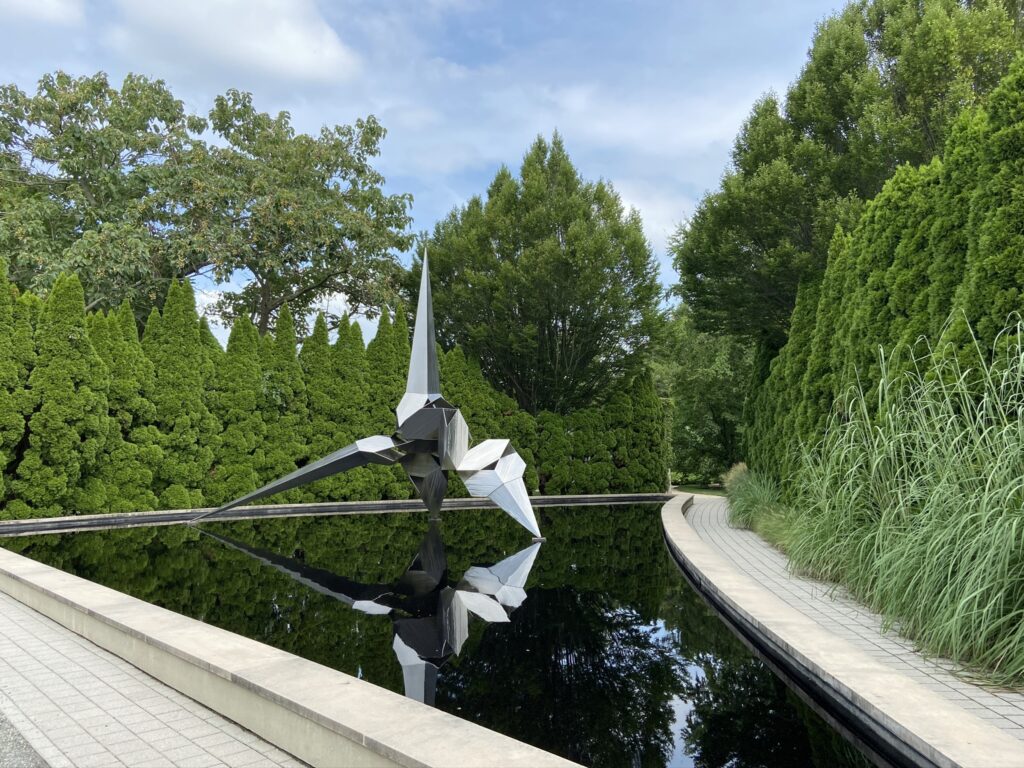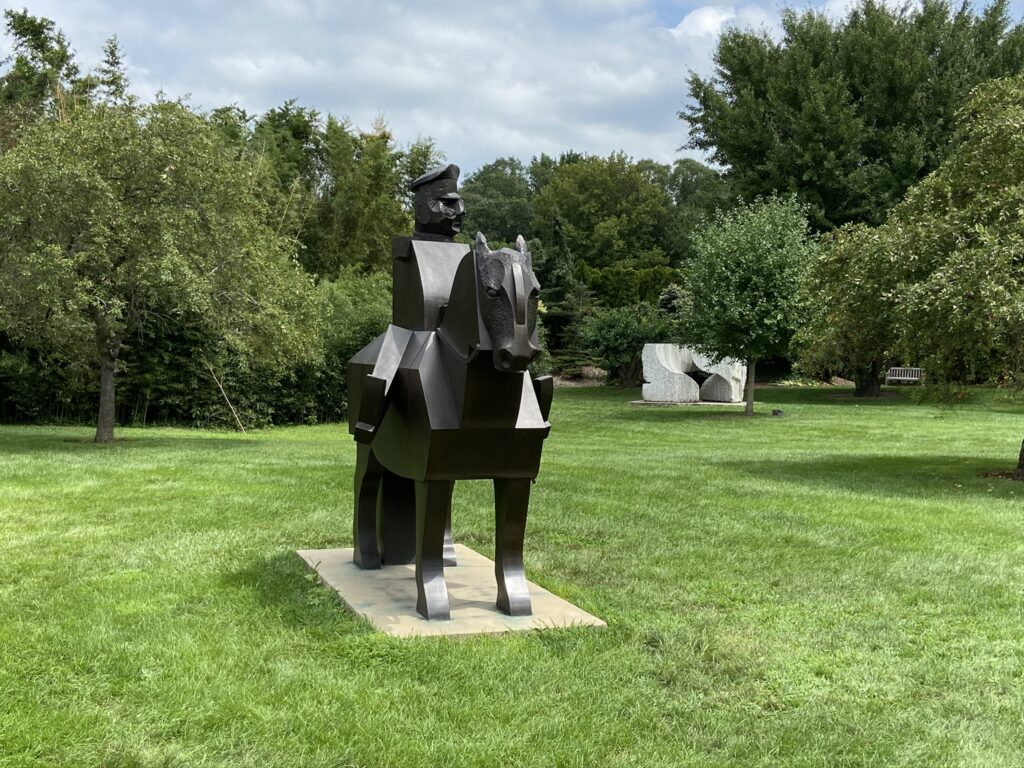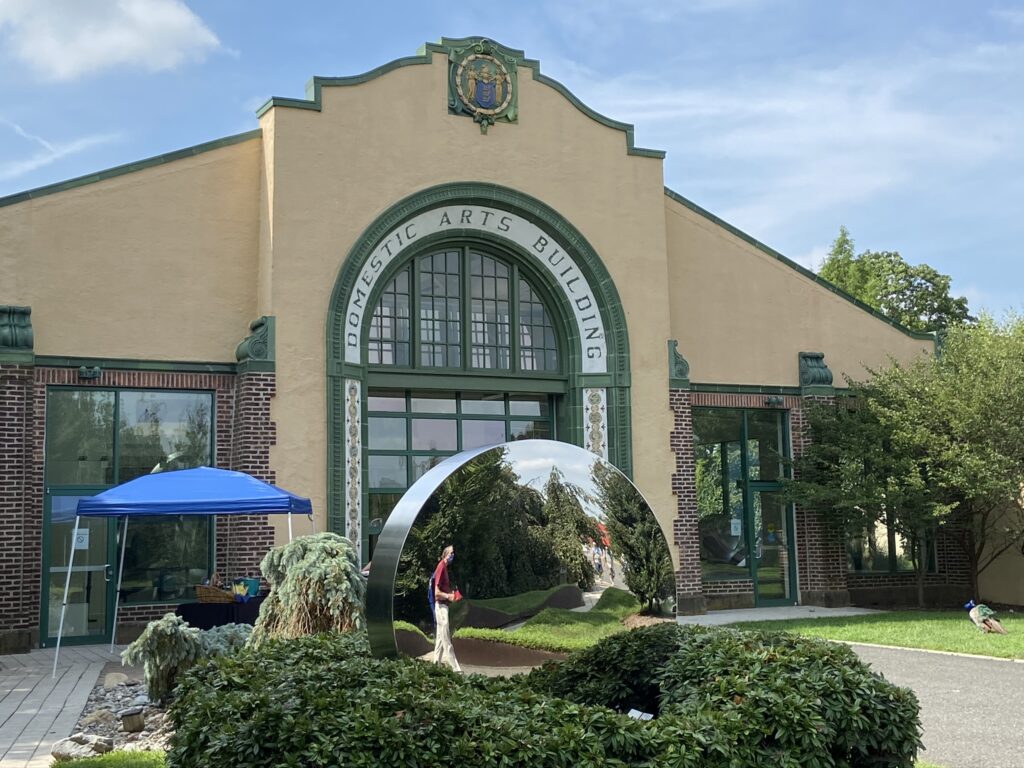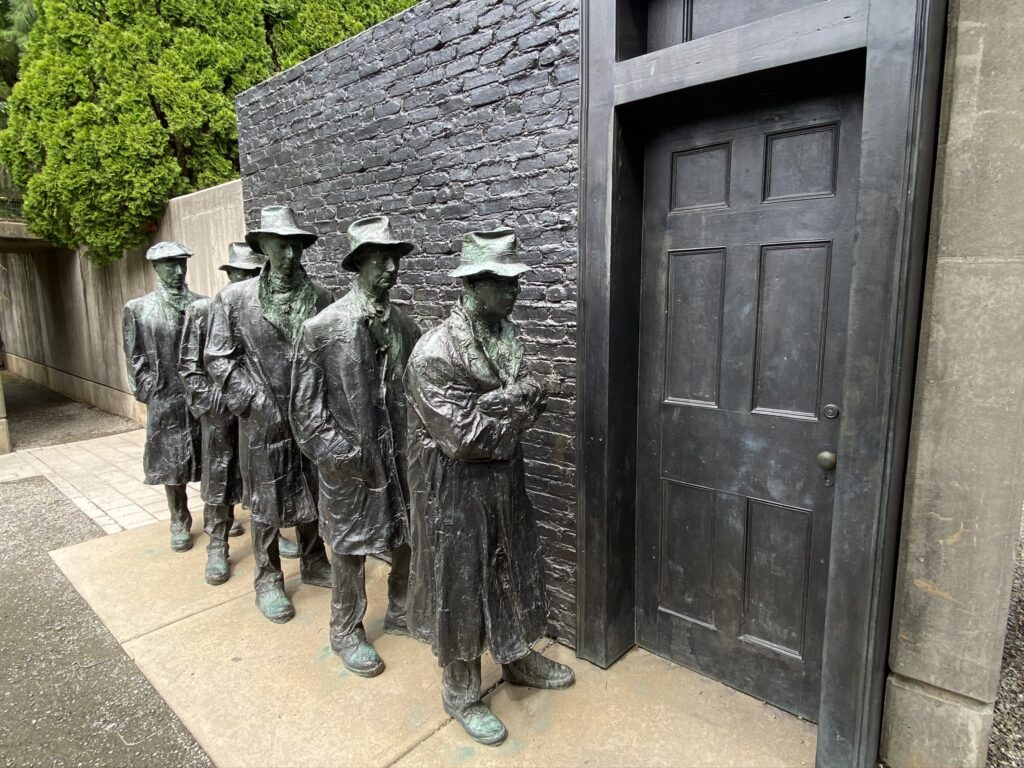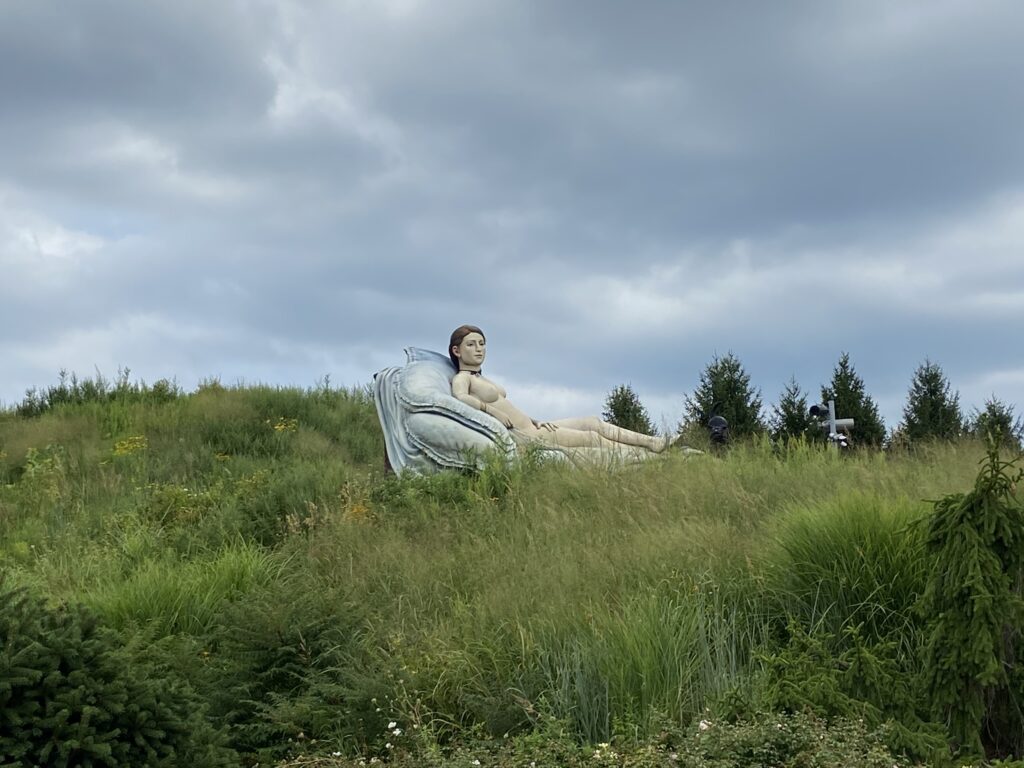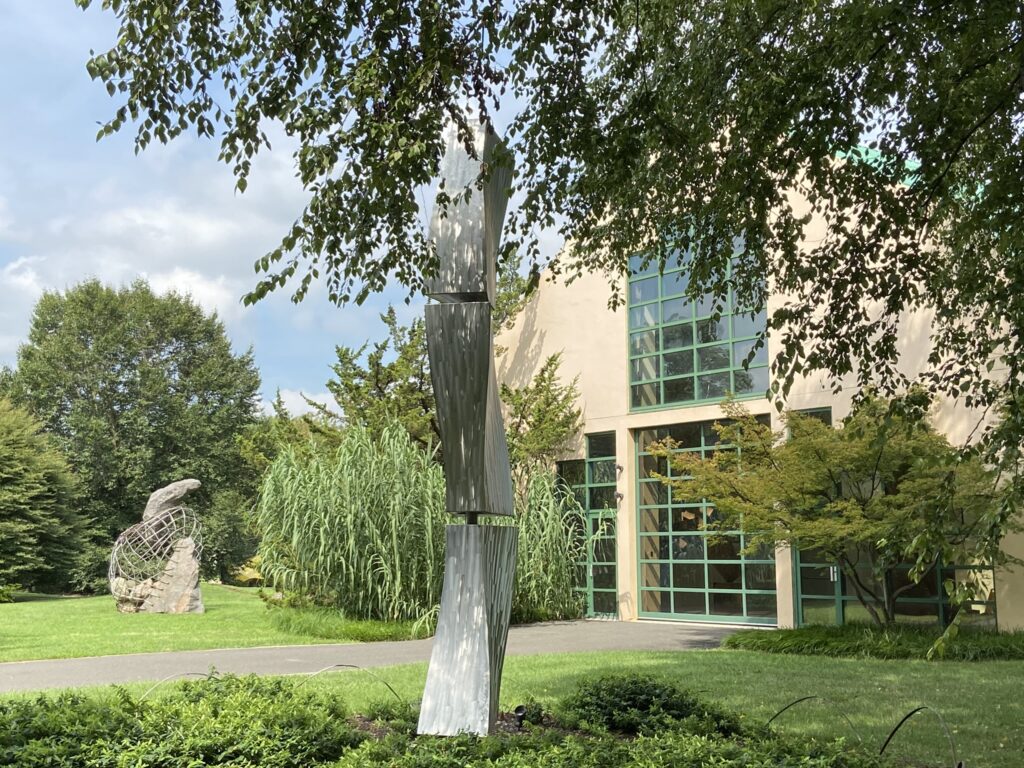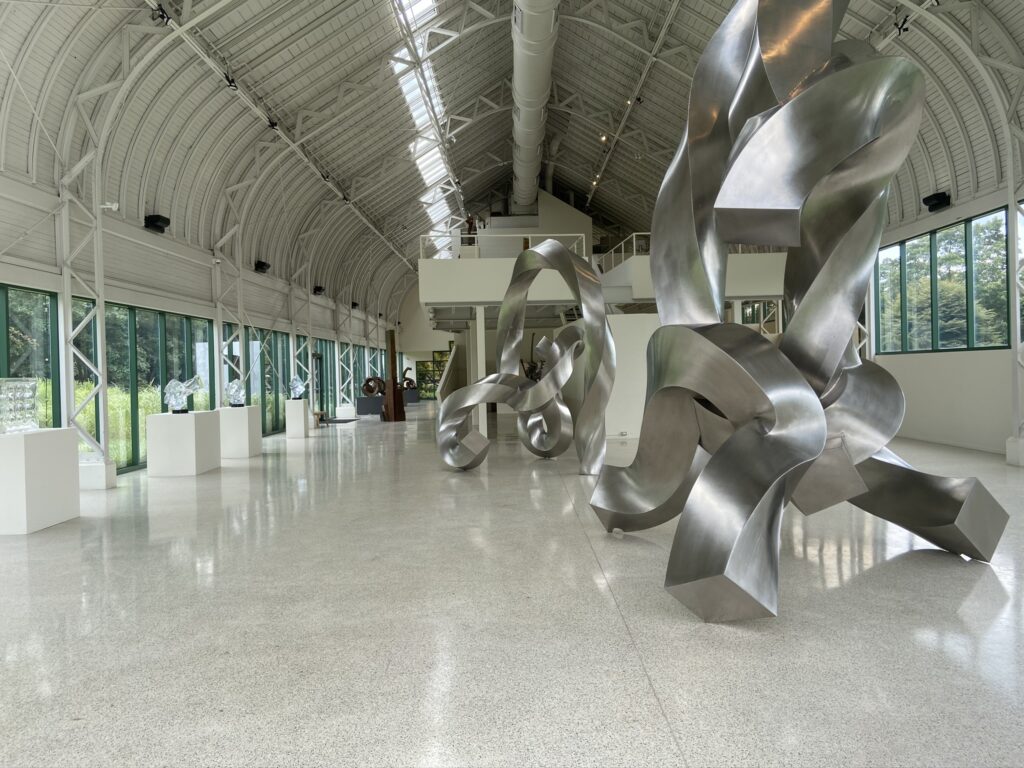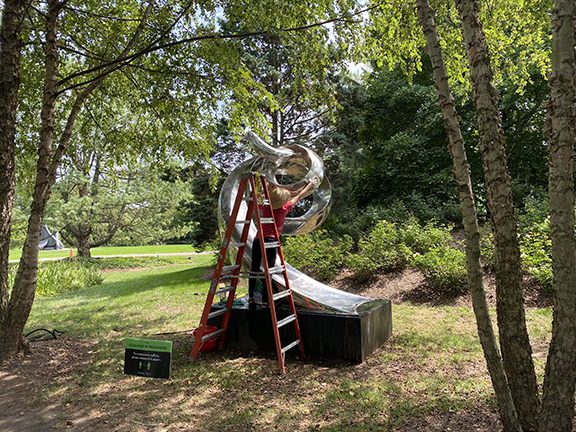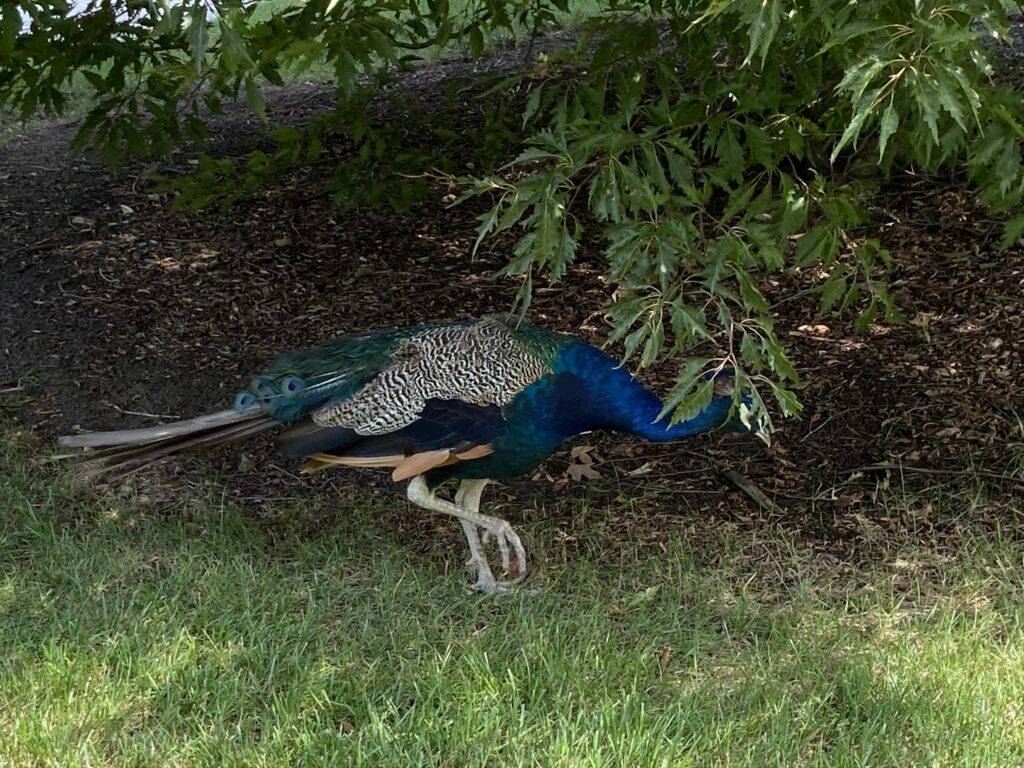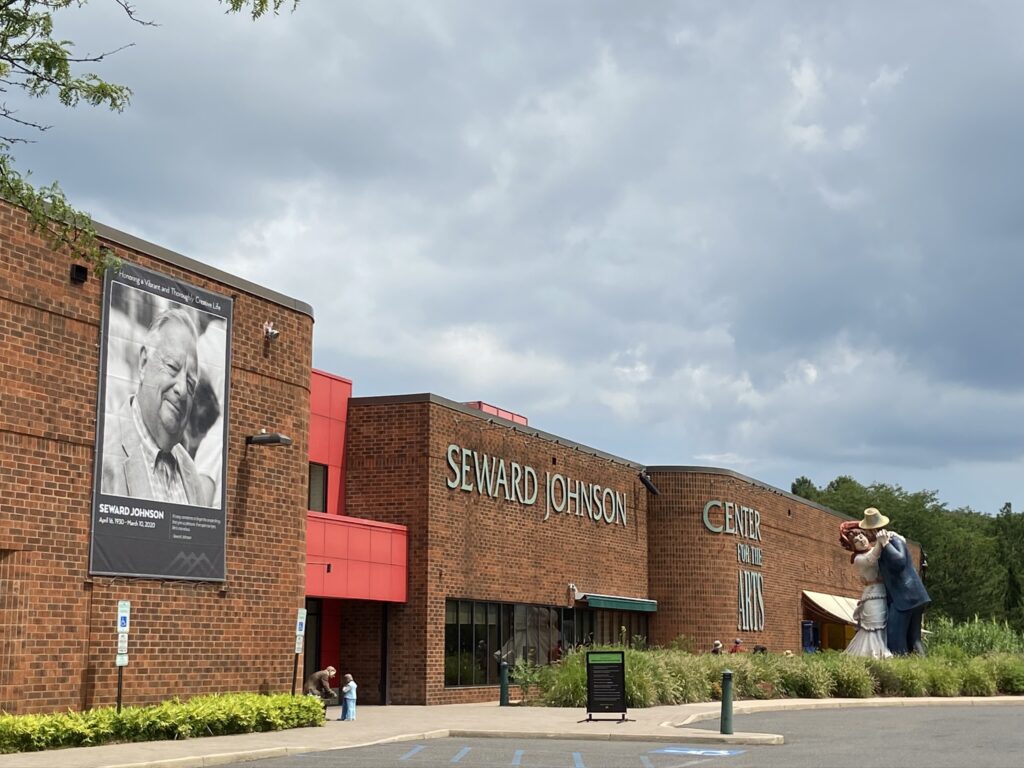The beautifully landscaped 42 acres of the Grounds for Sculpture (GFS) provide an inviting setting year-round for almost 300 contemporary sculptures, but this wasn’t always the case. Located in Hamilton near Trenton in central New Jersey, and off I-95 between Philadelphia and New York City, the museum, sculpture garden, and arboretum opened in 1992 with a modest 15 sculptures on a formerly derelict 15-acre site. Today, 250,000 people from the local community and region visit annually. Besides outdoor displays, GFS has four buildings with changing exhibits of works by upcoming and established artists, and offers educational classes and performances for children and adults. Due to Covid-19, visits require advance timed tickets, and most buildings and in-person programs are closed; check the website for updates.
Grounds for Sculpture was largely the vision of founder and artist Seward Johnson, who died in 2020 at 89. He wanted to present contemporary sculpture in a welcoming, non-intimidating setting that could nurture everyone’s creativity. Johnson, the creator of hyper-realistic sculptures of people, was also a philanthropist and the grandson of the founder of Johnson & Johnson. Since 1974, he had run a foundry, now an educational nonprofit, by the abandoned site that served as the New Jersey State Fairgrounds (and an auto racing track) from the 1860s to 1980. Gradually acquiring the land, he revitalized the historic buildings and established a park for sculpture where, in Johnson’s words, “the public is invited to relate to arts and nature in an emotional way . . . for an experience that elevates the soul and heals the spirit.”
Exploring the Art and Grounds
At Grounds for Sculpture, almost 300 of the still-growing collection’s more than 500 works are presented in landscaped, garden-like areas that create variety and liveliness in the generally flat site. Formal areas with features such as three restored fairgrounds buildings, courtyards with pools, and paved paths mix with natural woodlands, trails by the lakeside and ponds, and surprising elements such as a bamboo grove, a meadow, and the peacocks that roam the grounds. More than 2,000 trees were planted, along with native and exotic plants, to complement the sculptures. There’s even a tree tour.
Since GFS isn’t overly large, the grounds can feel packed with art, so there is something for all tastes. On view are figural and abstract works by more than 150 contemporary American and international artists, some commissioned for GFS. Artists represented include Magdalena Abakanowicz, Marisol Escobar, Red Grooms, Seward Johnson, Beverly Pepper, George Segal, Kiki Smith, Boaz Vaadia, and Isaac Witkin. In keeping with the spirit of GFS, visitors can usually touch many of the outdoor works, though not during the current pandemic.
The modern Seward Johnson Center for the Arts (currently closed) can be a good place to start, with three gallery spaces, a shop, and a café. The building is notable for achieving LEED Gold certification in 2019. Surrounding it are gardens and ponds with sculptures. On Olympia Hill is Seward Johnson’s monumental sculpture Confrontational Vulnerability, based on Olympia by Edward Manet.
Nearby, the Rat’s Woodlands and Lakeside areas have, among other sculptures, more examples of Johnson’s realistic sculptures based on noted Impressionist paintings. Like other of the sculptor’s works, these have won more popular than critical acclaim, but viewers can decide for themselves; many enjoy the whimsical sculptures and setting. One, If It Were Time, is a startlingly lifelike tableau of figures based on Garden at Sainte-Adresse by Monet.
A more formal area, GFS’s Sculpture Court presents George Segal’s somber Depression Breadline, cast in bronze at the Johnson Atelier in 1999. The sculpture’s first edition is part of the Franklin Delano Roosevelt Memorial in Washington, DC.
The Museum Building, surrounded by sculptures and the Museum Orchard, served as the Livestock Building of the state fairgrounds and now holds often-excellent changing exhibits. Currently closed, it displays works in a retrospective of American artist Bruce Beasley (on view through January 2021) that includes more than 60 sculptures around GFS. Some of the diverse works around this area are General Bronze by Marisol Escobar and Ba’al with Cat by Boaz Vaadia.
Among other areas to explore are the Domestic Arts Building, a former fairgrounds building (currently closed) used for changing exhibits, and the Meadow, a 7-acre area opened in 2014 with sculptures, trails, wildflowers, meadow grass, and bald cypress trees.
Classes and Community
With its mission of removing barriers to art appreciation and nurturing creativity in the public, Grounds for Sculpture has accessible programs for everyone from younger kids and schoolchildren to adults. Because of Covid-19, many of these are suspended (check the website for updates), but they have included hands-on art workshops and wellness sessions as well as meetings with artists, lectures, and tours. Some film screenings, concerts, and discussions are included in general admission. Artists have the opportunity to do residencies at GFS, too.
GFS has partnered with dozens of local community organizations, from schools to music groups and museums, to accomplish its mission. In 2017, it joined with five New Jersey groups to form the Sankofa Collaborative. The organization’s purpose is to help people working in libraries, museums, and schools present and discuss African American history.
Whether visitors are newcomers to modern sculpture or longtime fans, there’s plenty to engage with and experience at the Grounds for Sculpture.
Side Dish
To stay in the artistic mood, visitors can dine at the on-site, pond-side Rat’s Restaurant, named for the character in Wind in the Willows, the classic children’s tale. The rustic décor and country French and American dishes were designed to capture the feeling of Giverny, the French village where Monet lived. Due to Covid-19, reservations are required.
Linda Cabasin is a travel editor and writer who covered the globe at Fodor’s before taking up the freelance life. She’s a contributing editor at Fathom. Follow her on Instagram and Twitter at @lcabasin.

